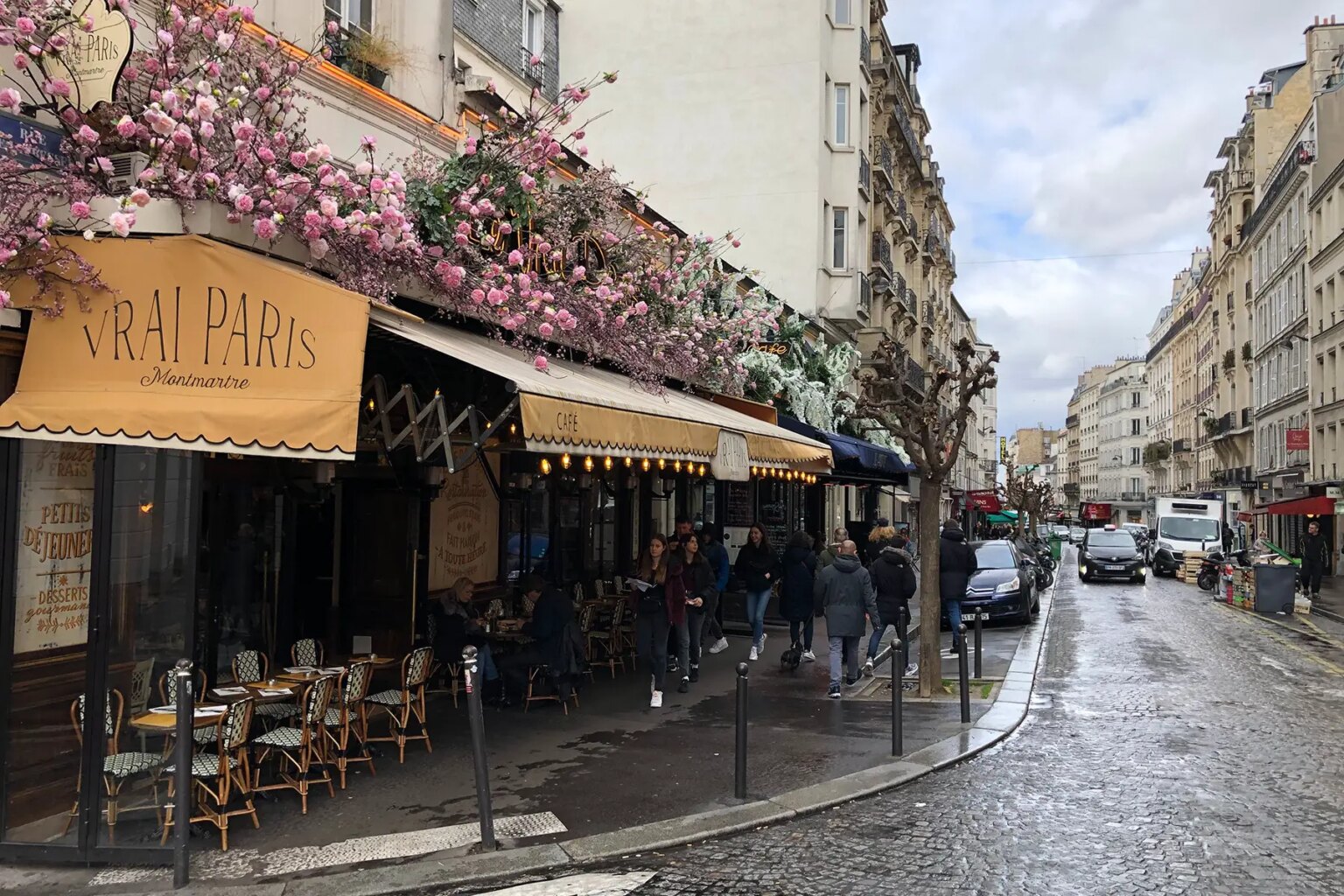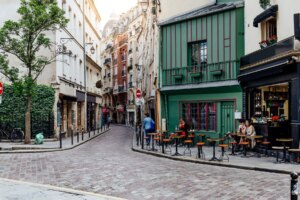There are many beautiful places to live in France, but none quite as magical as the city of light. Of course, being a major metropolis, Paris contains a multitude of districts. Most have a unique charm, but a few are also best avoided. The article below should help you choose your next chez-soi in Paris through the following topics:
- An overview of Paris
- How to find housing in Paris
- The arrondissements of Paris
- 1st and 2nd arrondissements: center of Paris
- 3rd and 4th arrondissements: Le Marais
- 5th & 6th arrondissements: Latin Quarter
- 7th arrondissement: Eiffel Tower district
- 8th and 9th arrondissements: chic Paris
- 12th arrondissement: sporty Bercy
- 13th, 14th, and 15th arrondissement: residential southern Paris
- 16th and 17th arrondissement: swanky western Paris
- 20th arrondissement: more affordabe Père Lachaise area
- Neighborhoods to avoid in Paris
- Tips on choosing a neighborhood in Paris
- Useful resources
Spotahome
Looking for an easy way to find your next home? Spotahome is an on-line property portal operating in France that takes the stress out of renting. With Spotahome's unique online platform, you can find, look around, and book your next rental property without leaving home. Making moving home easier with Spotahome.
An overview of Paris
Paris is the second most visited city in the world, hosting over 17 million annual visitors. This, of course, comes on top of its year-round intra-muros population of roughly 2.16 million people. To accommodate them all, Paris counts almost 1.4 million apartments and houses, and over 1,600 hotels. It’s not surprising that most lodgings are rather cramped. Families increasingly look to the Paris suburbs, especially to buy property.
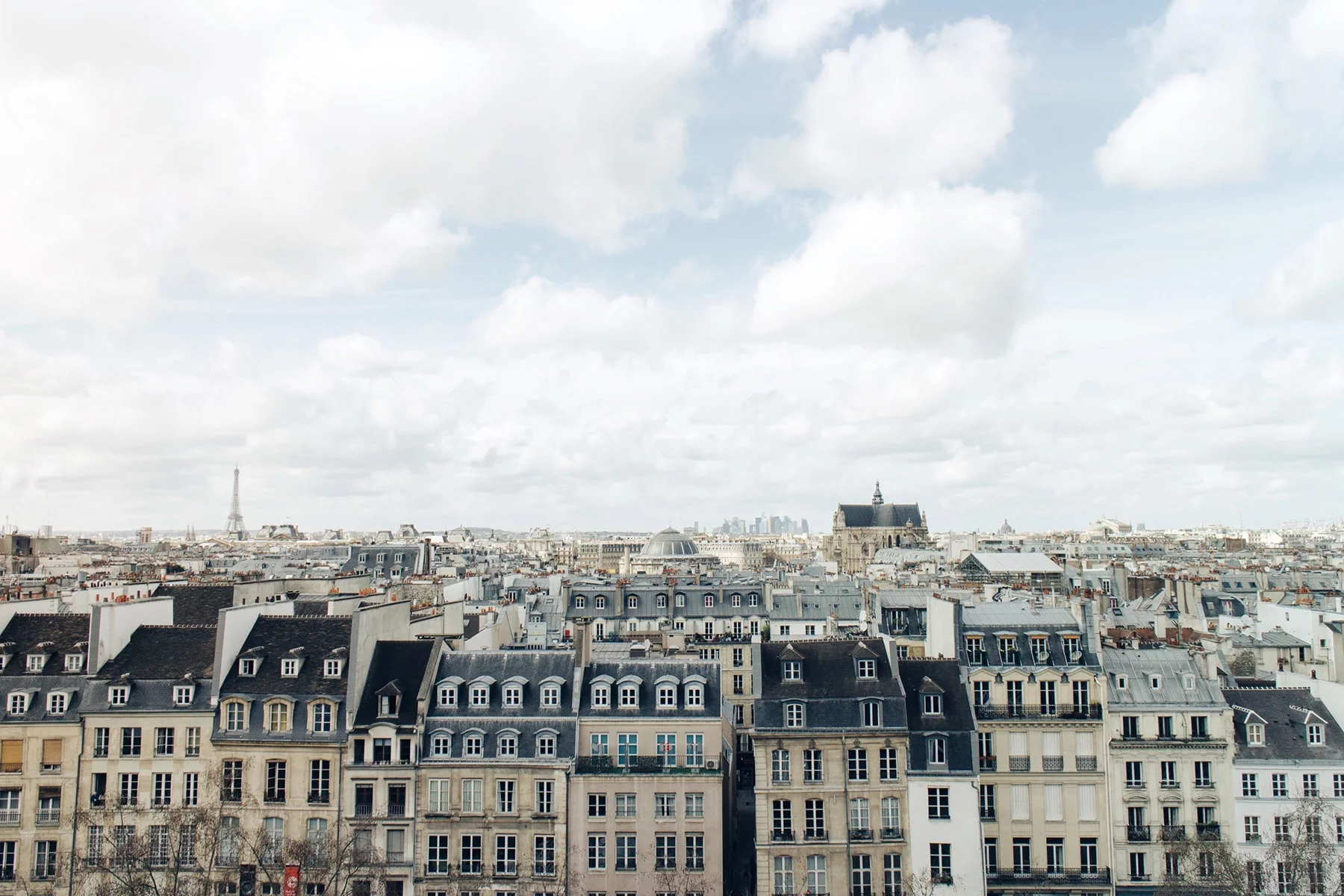
According to Choose Paris Region (PDF), the Ile-de-France (Paris and its suburbs), has a population of around 12.2 million people. Of these, over 700,000 are students, and 1.7 million are foreigners. It all makes for a very young and multicultural region, where you’ll find people from all over the world. There is a notably large American expat community in France, with around 14,000 Americans living in the Paris Region alone. In addition, over half a million people come to work and study from other European countries.
The good news is that compared to other global metropolises, the cost of living in Paris is pretty reasonable. Paris’ position has dropped sharply in ECA International’s listings of the most expensive locations in the world. This list takes into account the cost of basics including food, everyday goods and services, utilities, and public transport. After an unsteady period for the euro, Paris dropped out of the top 30 list.
How to find housing in Paris
In 2022, average rents in Paris are €35 per m2, while buying property costs an average of €11,514 per m2. However, with the right budget and a little shrewd house-hunting, you too can find a home for yourself in one of Paris’ many districts, or arrondissements. Of course, you need to know a little more about them to choose which is best for you. Luckily, below you will find a description of the different arrondissements to find which best suits your budget and lifestyle.
The most popular websites in France to look for housing include:
On LeBonCoin, search under the category “immobilier“, and then “location” for rentals or “ventes immobilières” for properties on sale. You can then enter your postcode or town, or simply click on a region of France to launch your search. On PAP, you will only find ads posted directly by the owners, so you can bypass agency fees and procedures.
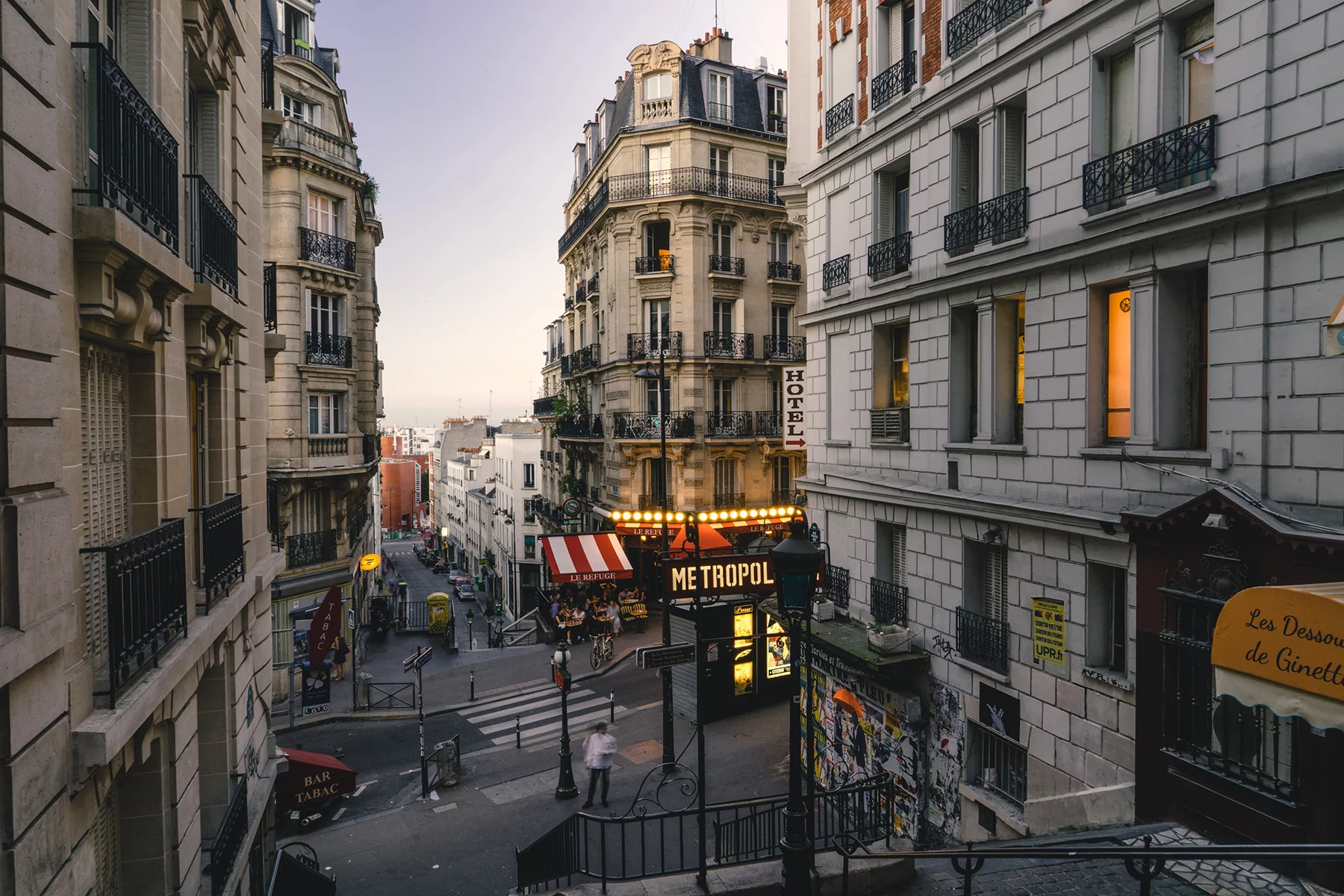
If you’re moving to Paris temporarily, it might be worth checking out short-term rentals. You can find options on portals such as HousingAnywhere. Meanwhile, Spotahome offers mid- to long-term rentals.
Typical accommodation in Paris
The housing stock in Paris consists primarily of apartments. Moreover, due to high prices, only 33% of Parisians own their own homes (PDF, 2019), far below the national average. On the other hand, 9% of Parisian apartments are secondary residences. Haussmann-style apartments with their tall and often drafty windows dominate the market. Only 2% of the housing available in Paris is newly built.
Buying in Paris
Real estate prices in Paris can vary widely depending on which arrondissement you want to live in. In 2022, the average price in the city is around €11,000 per m2. However, this ranges from €9,475 per m2 in the 19th arrondissement to €15,367 per m2 in the coveted sixth. You may also want to check out more affordable properties in the Paris suburbs. Seloger.com offers a very handy current real estate price tool. Browse to the bottom of the page to get m2 prices per arrondissement.
To look at the different types of property in each arrondissement, go to the Observatoire Marché Immobilier Paris.
Renting in Paris
Renting accommodation in Paris is a lot more expensive than elsewhere in France. Apartments are small, and many students live in cramped private rooms with shared bathrooms. On average in 2022, a non-furnished apartment cost €32 per m2 to rent. A furnished one will often cost €35-40 per m2 (2022 prices).
Rental prices vary less by arrondissement than sale prices. However, the most expensive options are still likely to be the central and trendy 3rd, 4th and 6th arrondissements. For more affordable rent, you’ll need to look to the suburbs.
Seloger.com also offers current estimates on rental prices per m2.
The arrondissements of Paris
Paris minus its suburbs is referred to as Paris intra-muros, and is made up of 20 districts, or arrondissements. You can always know which one you are in simply by looking at the street signs. Above the name of the street you will often see a number followed by “Arrt.” for “Arrondissement”. A person’s address is also a giveaway, since the last two numbers of the postcode indicate the arrondissement. So, for example, 75003 is a 3rd arrondissement postcode, while 75018 is the 18th.
A further division is the left bank (rive gauche) and right bank (rive droite) of the Seine. This means the area south (left) and north (right) of the River Seine. Traditionally, the rive gauche is seen as more artistic, bohemian, and student-friendly, while the rive droite is more bourgeois and sophisticated. However, some areas within the rive droite remain working-class districts, popular among immigrants, families, and students.
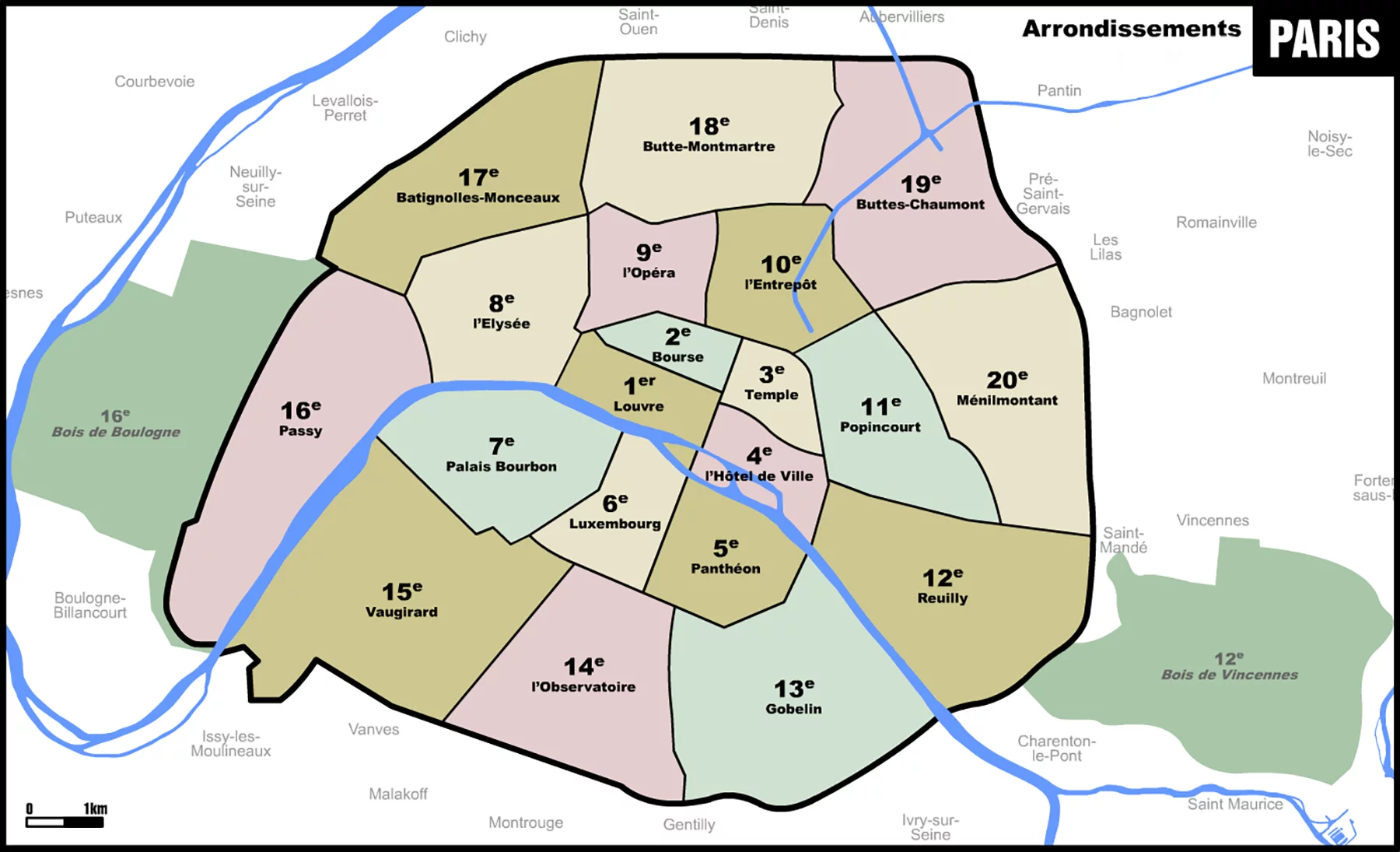
If you look at a map of Paris, the arrondissements spiral out in the form of a snail shell. The 1st, 2nd, 3rd, and 4th arrondissements are the most central, and also the most expensive areas to live in. The numbers of the arrondissements then climb as they spiral out from the center, finishing with the most affordable in the far northeast (the 19th) and east (the 20th) of the city.
All of central Paris is well-connected to the dense public transport system, which includes buses, metro lines, fast trains to the suburbs, and trams. Whichever arrondissement you choose, you will be close to essential public services, including schools, doctors, and hospitals. But each arrondissement differs somewhat in terms of the atmosphere, population, and even crime statistics. Therefore, it’s worth getting to know them a little better before choosing a place to call home.
1st and 2nd arrondissements: center of Paris
The heart of Paris is primarily shops, offices, and tourist attractions with relatively few apartments. In the 1st arrondissement, you will find the Louvre and Tuileries gardens, the shopping hub of Les Halles, and the monstrous metro changeover at Chatelet. The 2nd arrondissement is relatively small. At its heart is the Bourse, the former stock exchange.
The area is easily walkable, making this a good choice for anyone wanting to be close to the business district. From here, you are also very well connected by public transport to the rest of the city and even the suburbs. At the Chatelet and Les Halles transport hub, five metro lines and two RER train lines will whizz you across the city in no time… as long as you can find your way around their underground maze!
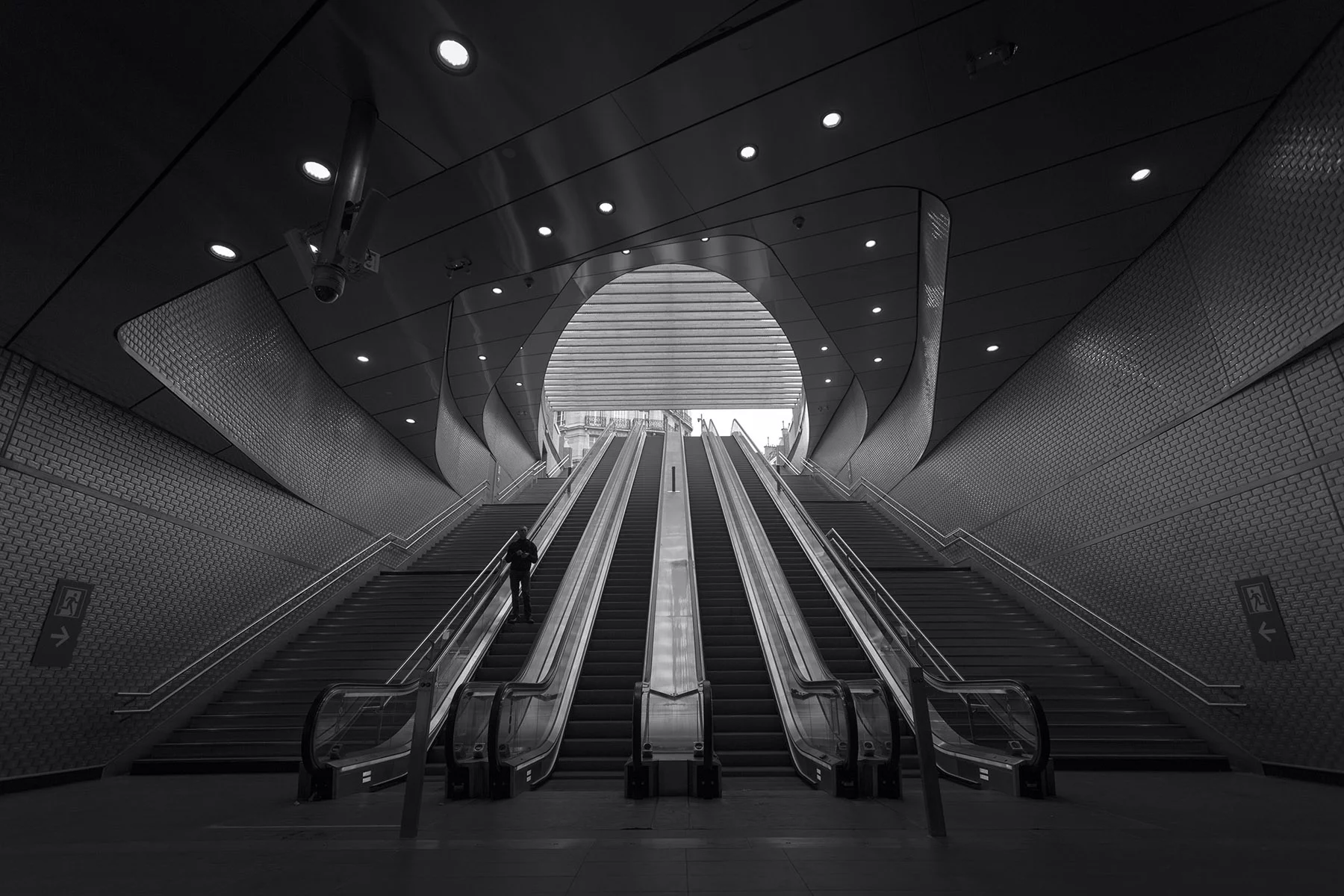
However, with few restaurants or grocery shops available in the evening, it’s not necessarily the most practical area to live in. Bars and other services largely cater to tourists and passing professionals. As a result, it’s not a very warm or intimate district, and it lacks a neighborhood feel. Not to mention that real estate prices here are some of the most expensive in the city.
It may also be worth noting that the richest areas of Paris are also where most personal thefts occur. For instance, the rate of theft of items such as handbags and phones is 16 times higher in the 1st arrondissement than in Paris overall. As for the 2nd arrondissement, it registers the highest rate of burglaries in Paris.
3rd and 4th arrondissements: Le Marais
The 3rd and 4th arrondissements are found just to the east of the first two. They are also in the very center of the city, but have a very different feel. Here, you will likewise find some major tourist sites including Notre Dame Cathedral and the Picasso Museum. But despite this, the 3rd and 4th arrondissements have a very local vibe. They are packed to the brim with a diverse community of Parisians, mingling in local cafés, bars, and clubs.
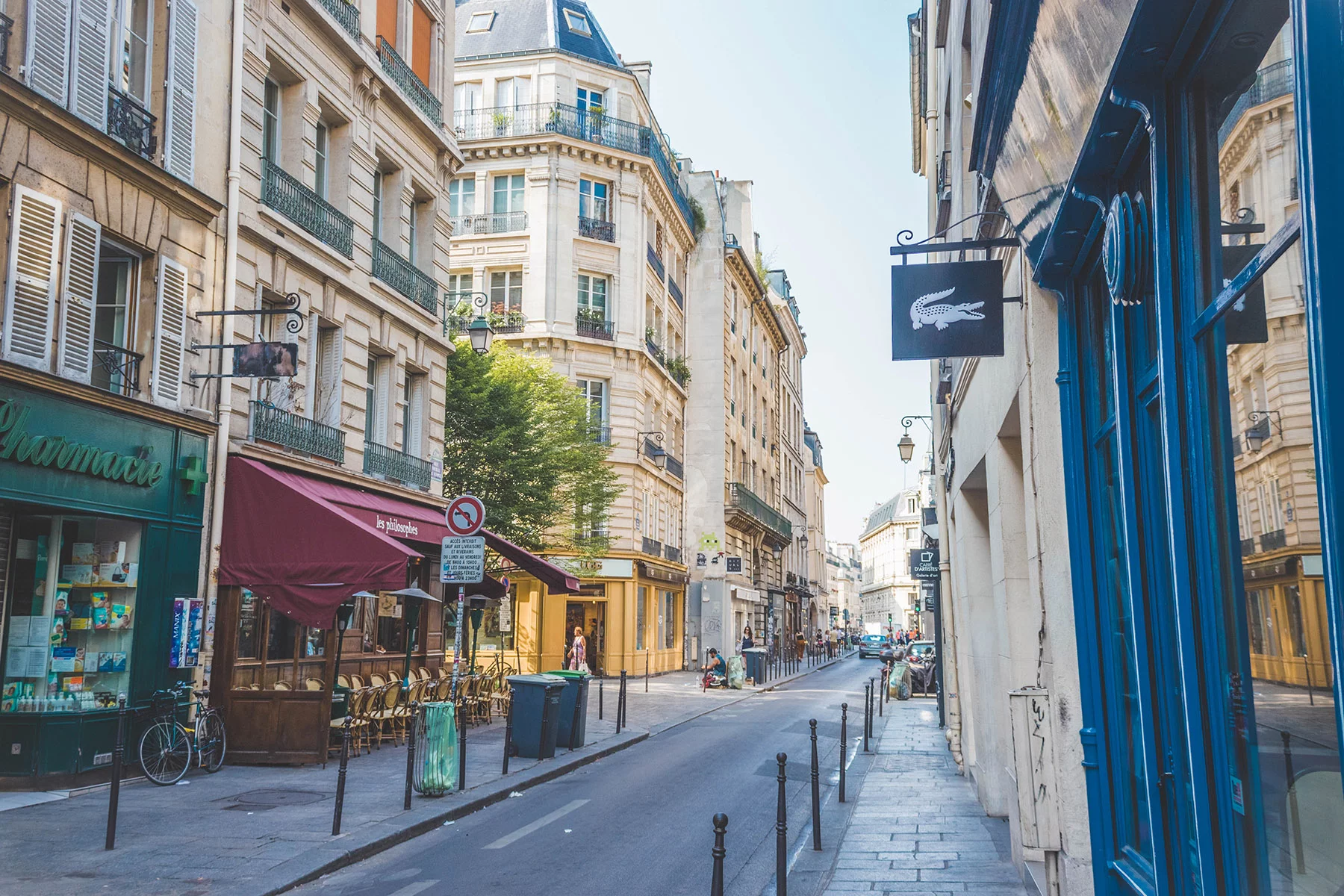
The Marais, an area that takes up a good chunk of the 4th arrondissement north of the Seine is known for hosting two very different communities. On the one hand, it is a hub for Paris’ orthodox Jews. You will find them, and some of the city’s best Jewish restaurants and bakeries, on the rue des Rosiers. On the other hand, it is a renowned area for the city’s gay community, which lives here and parties in the Marais’ many LGBT+ bars and clubs.
Another much-loved local spot is the Marché des Enfants Rouges, in the 3rd arrondissement. Open every day but Monday, this local market was built in 1615. You’ll find locals grabbing a coffee, sitting down to lunch, or buying fresh produce in the large market hall and adjoining outdoor area.
If you can afford the house prices here, it’s a central, vibrant, and wonderfully authentic place to live and experience Paris at its best. Bear in mind, however, that owning a car is not a good idea since parking in central Paris is expensive and difficult to find. Most people walk, bike, or use the metro and buses to get around.
5th & 6th arrondissements: Latin Quarter
Hugging the left bank of the Seine, the Latin Quarter has a rich expat history. It was home, most notably, to Ernest Hemingway and Gertrude Stein. You can still go and sip an (expensive) coffee at Les Deux Magots, where they wrote and debated alongside the likes of Scott Fitzgerald and Jean-Paul Sartre. Then, you can browse English books at the Shakespeare & Co bookshop.
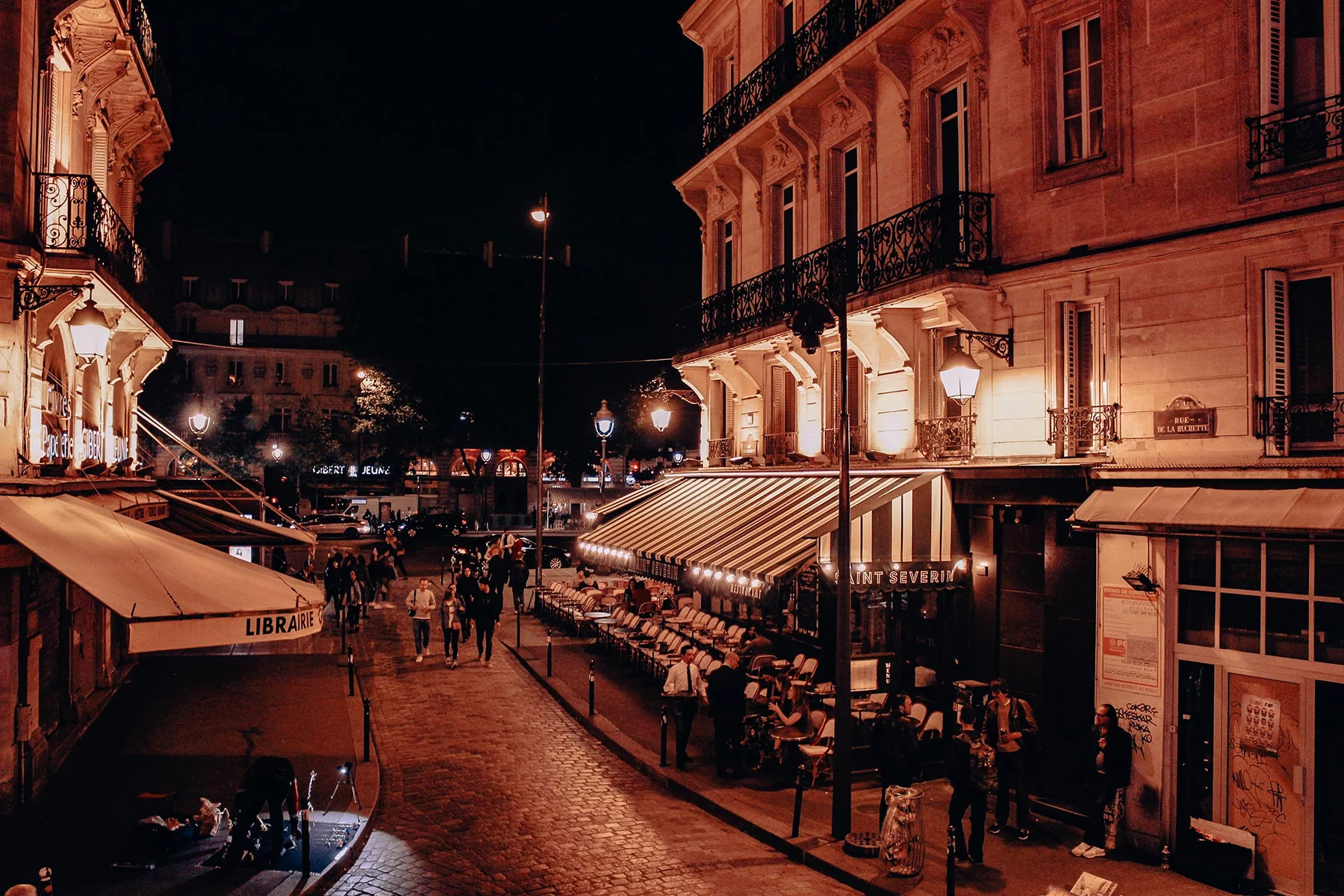
The Latin Quarter is a joyful mix of students, foreigners, and wealthy Parisians. Depending on which street you take, you might come across a row of arthouse cinemas, contemporary art galleries, fancy boutiques, or affordable Asian cuisine. It’s a vibrant, if rather pricy, neighborhood. Rents are on the higher end, and the 6th arrondissement, especially around Saint-Germain, boasts some of the most expensive real estate for purchase. In addition, if you live here, forget about driving. Parking is a nightmare, but the best that Paris has to offer is within walking distance.
7th arrondissement: Eiffel Tower district
There’s something very cinematic about catching a glimpse of the Eiffel Tower from your balcony, as you may be able to do if you decide to live in the 7th arrondissement. It is both a rather grand and rather residential district. You will be close to impressive sites including the Invalides Museum, the Ecole Militaire, and the National Assembly. It is also home to the Bilingual Montessori School of Paris, the American Univeristy, and the American Church of Paris.

For expats with children, this can be a convenient and quiet neighborhood to have as a base. All the basic necessities are there, including grocery stores and outdoor markets, and you won’t have to go far for an evening stroll along the Seine. On the other hand, it is not a particularly vibrant area for nightlife, and local bistros cater largely to tourists and business lunches. The 7th is also pricy.
8th and 9th arrondissements: chic Paris
This large area of the right bank encompasses the Champs-Elysées, the Parc Monceau, and the Saint-Lazare train station (in the 8th), and stretches from the Opéra up to Pigalle (in the 9th). It is an area scattered with museums, grand squares, galleries, luxury stores, government offices, and auction houses. While the beautiful Parc Monceau is packed with local families on the weekends, most of the area caters to a professional population.
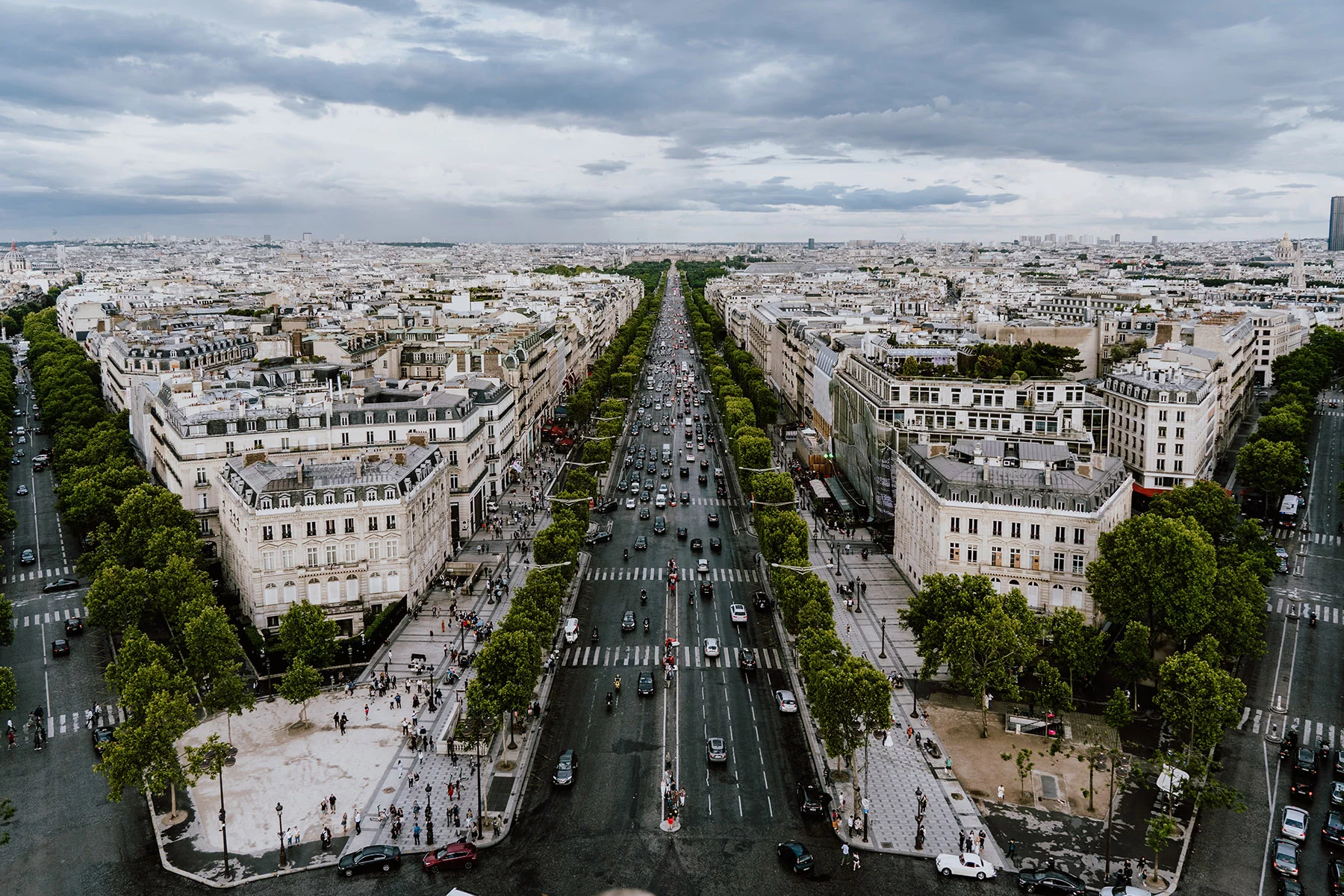
However, the northern part of the 9th arrondissement, roughly from Place de Clichy to Anvers, merges into the red light district. This area draws tourists and those in search of all forms of nightlife, but definitely fewer families. As such, real estate here is rather more affordable than in the very chic southern sections of these two arrondissements.
12th arrondissement: sporty Bercy
The 12th arrondissement is in the east of Paris, running along the Seine’s right bank from the Canal Saint-Martin, and encompassing the huge and leafy Bois de Vincennes beyond the périphérique (the high-speed road that belts around Paris). It is ideal for families and anyone in search of outdoor activities away from asphalt. The Parc de Bercy also has a skate park and live sports arena, while the Coulée Verte, a raised park, is popular with runners and cyclists.
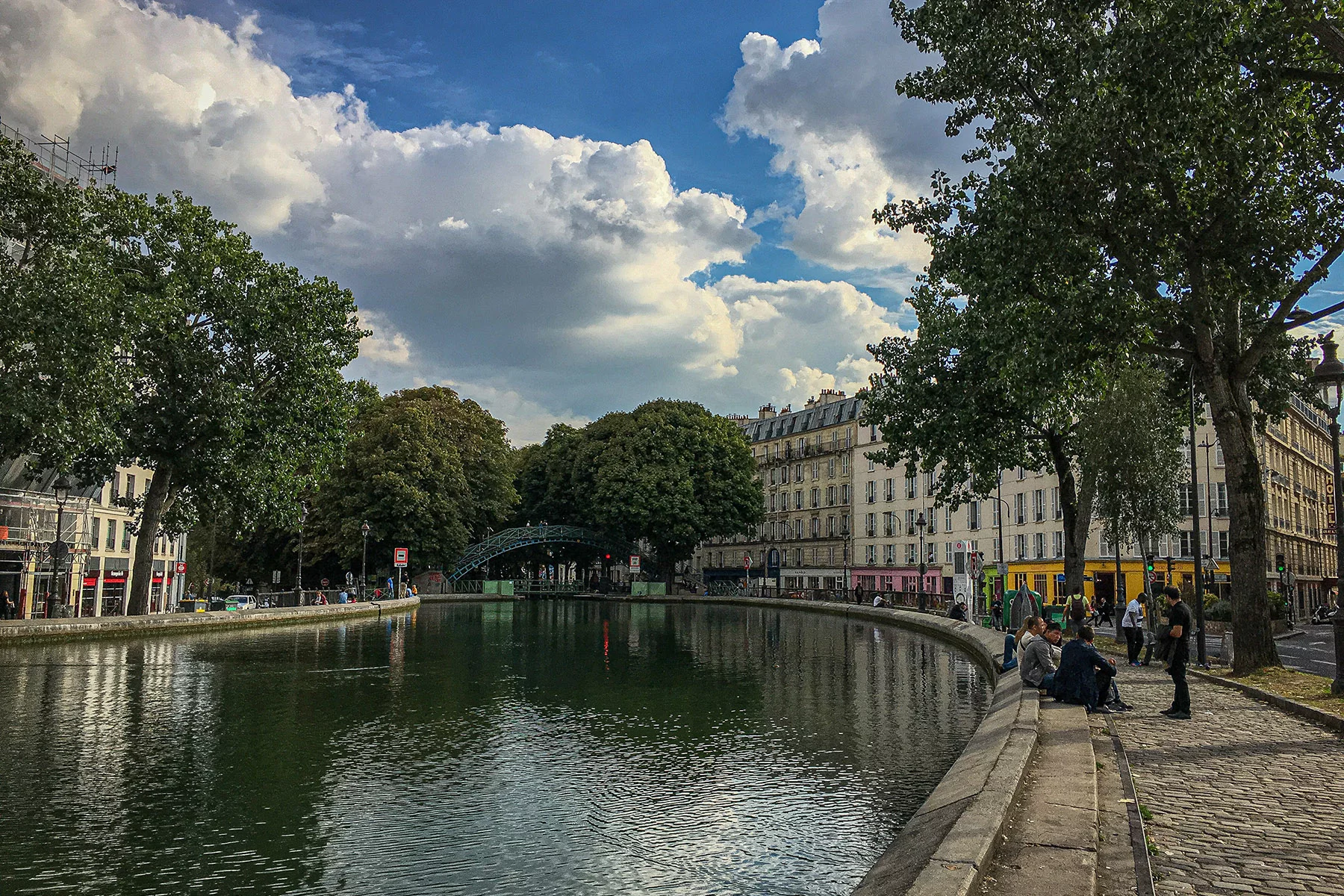
New developments in this area mean a more diverse housing stock that includes modern and attractive social housing. Bercy Village offers a vibrant local feel with a cinema, shops, restaurants, and cultural events. Young couples and families are also drawn to the slightly more affordable real estate.
13th, 14th, and 15th arrondissement: residential southern Paris
Drawing a strip along the south of the city, the 13th, 14th, and 15th arrondissements largely represent a local, authentic Paris away from the tourist crowds. The 13th includes a student hub by the Seine, with a university campus and the national François-Mitterand library, a Chinese quarter near Olympiades, and the vibrant Butte-aux-Cailles district. In the 14th, you’ll find some of Paris’ most leafy neighborhoods around the Parc Montsouris, as well as the Montparnasse cemetery and train station, surrounded by shops, cinemas, and restaurants. Finally, the 15th is maybe the most quiet and residential of the three, dotted with small parks and cafés where locals gather.
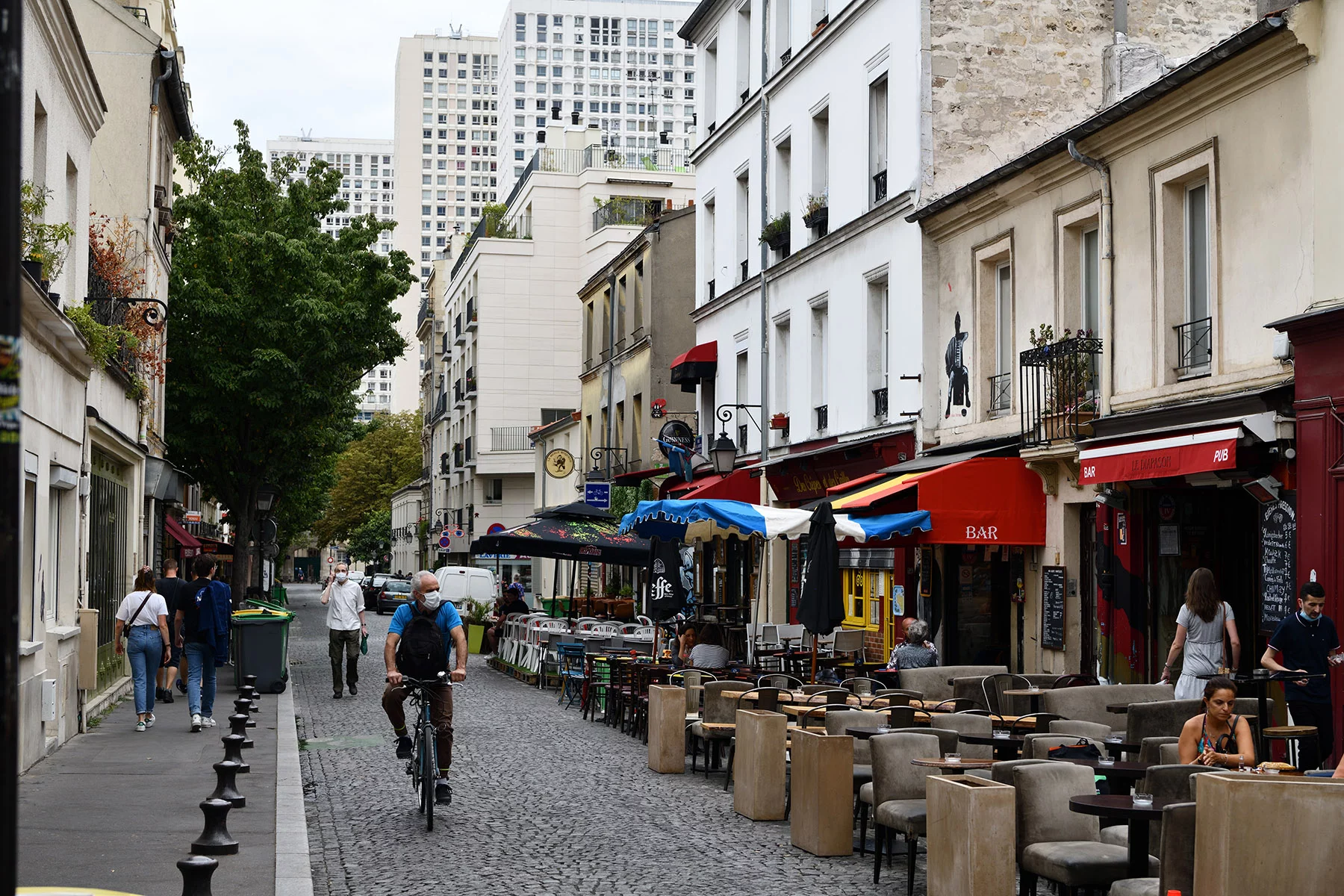
These areas of Paris have some of the lowest crime rates in the city. Having said that, major rail hubs often draw petty criminals, and the Gare Montparnasse area has a high rate of underage delinquents compared to the rest of Paris. Most neighborhoods, however, are very safe and popular with families, but increasingly pricy too. Some areas of the 13th though, especially Chinatown, are still affordable.
16th and 17th arrondissement: swanky western Paris
The 16th and 17th arrondissements are located in the far west of the city. In the middle is the sprawling Bois de Boulogne, which has recently welcomed the impressive Louis Vuitton art foundation. The park itself is inhabited by joggers and families by day, and famously by vice (i.e. prostitutes and drug dealers) once the sun sets. The area is a little far from the city center, and thus generally less popular with the younger population, since it also offers little in terms of nightlife.
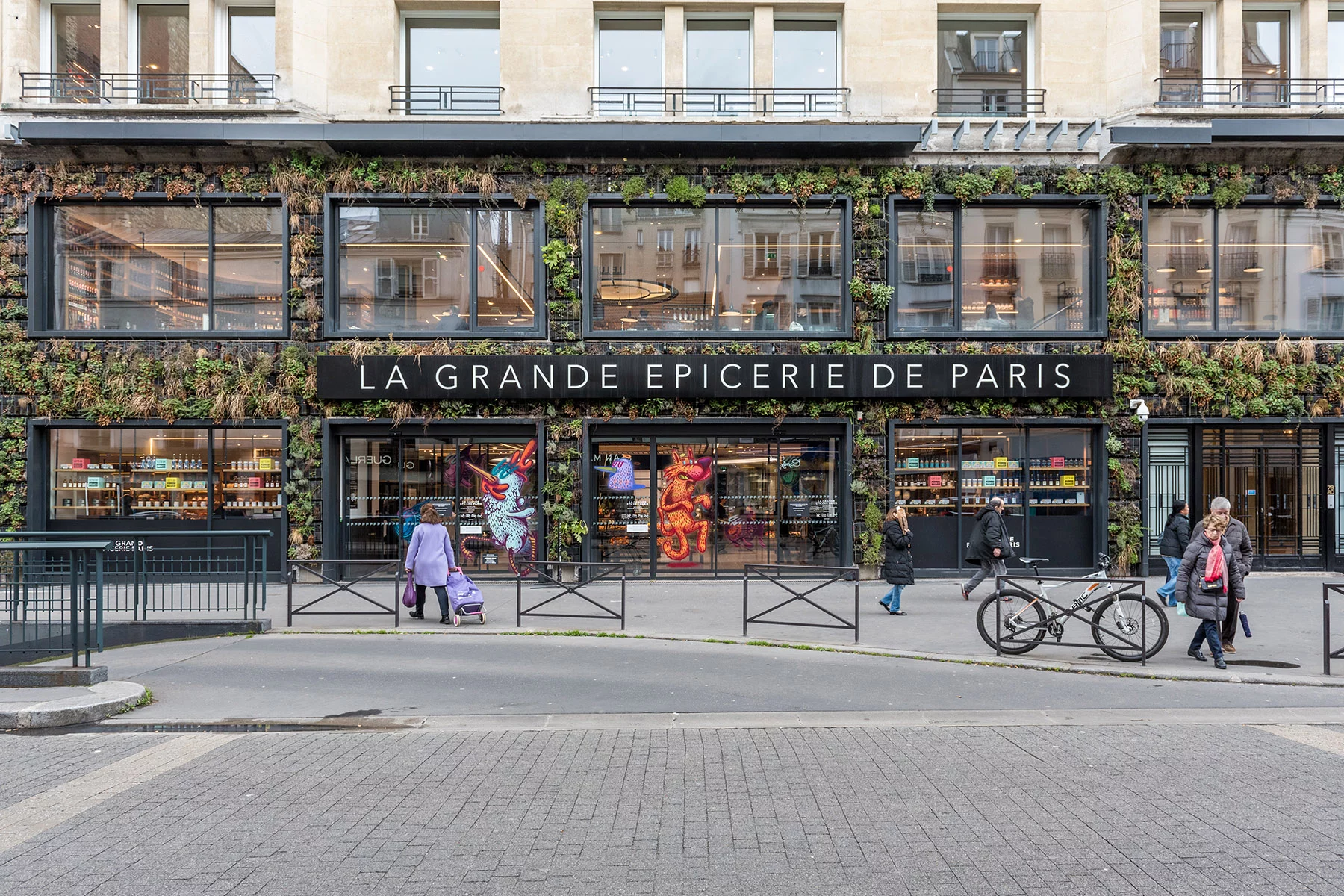
The 16th, however, is rather attractive to sports enthusiasts. It’s where you’ll find the Parc des Princes soccer stadium, the Roland Garros tennis grounds, the Jean-Bouin rugby fields, the Longchamp horse racetrack, and the Polo de Paris golf club. In addition, expats are drawn to the international community that gathers around bilingual institutions such as the Eurécole and the International School of Paris.
Aside from that, these arrondissements are known for being the home of Paris’ bourgeoisie. They are largely peaceful and prosperous residential neighborhoods with expensive amenities. Apartments vary from spacious family dwellings to tiny maid’s quarters populated by students. The housing stock is varied, with everything from new apartment blocks to 17th-century town houses. Overall, home prices here are pretty average.
20th arrondissement: more affordabe Père Lachaise area
The 20th arrondissement is located in the very east of the city. It is the last and also one of the most affordable arrondissements in terms of real estate prices. The area has a more diverse architecture than in the city center, and especially more low-cost housing. As such, many young families have been moving here in recent years.
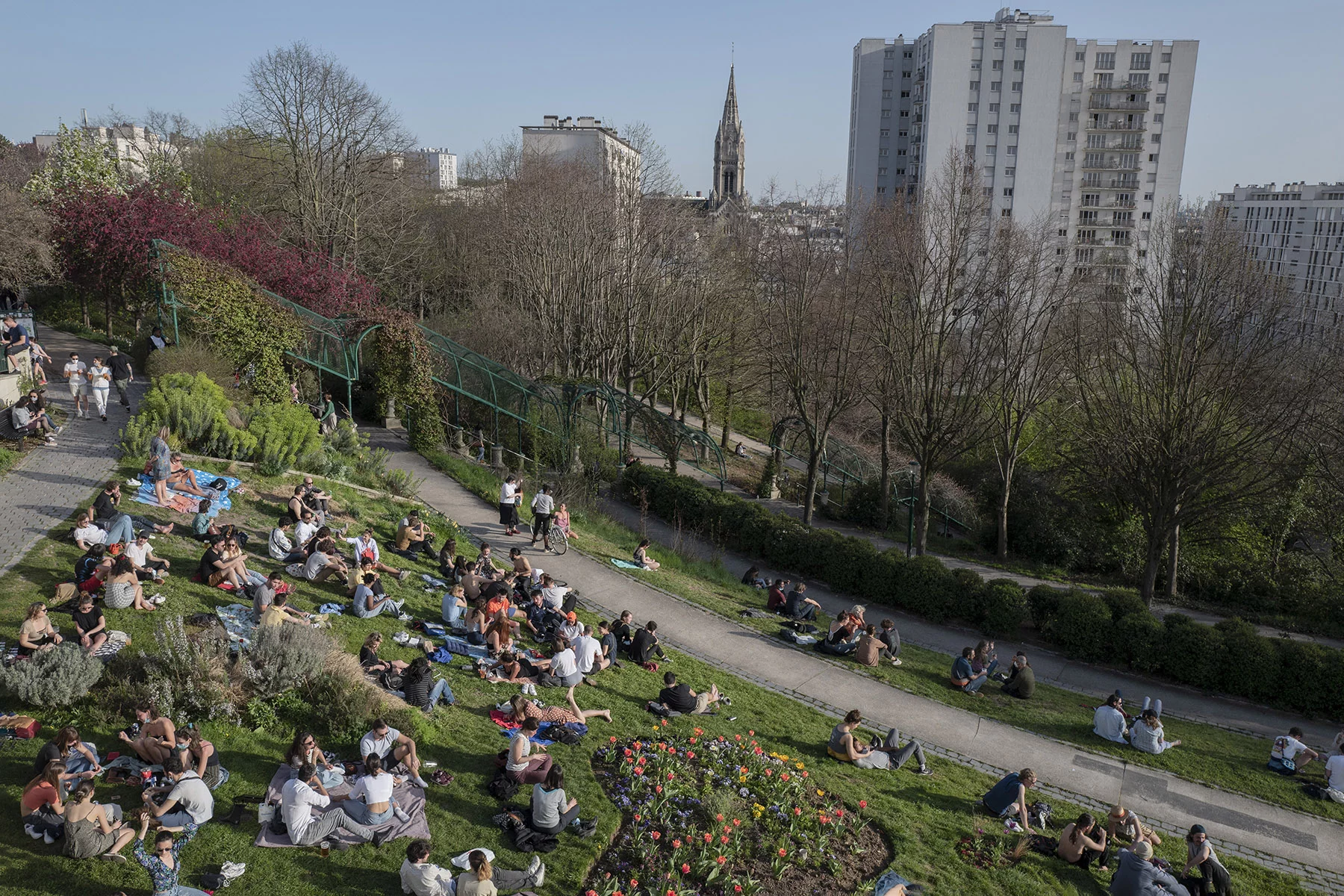
Right in the middle is the Père Lachaise cemetery. It is the area’s biggest draw, where you will find the tombs of many celebrities including Jim Morrison, Edith Piaf, and Oscar Wilde. The northern part of this arrondissement, around Télégraphe and Belleville, is home to African immigrant communities. These areas are often deemed less safe, as attested to by the high rate of physical and criminally-motivated violence that is reported in the 20th arrondissement (PDF).
Neighborhoods to avoid in Paris
10th arrondissement: Les Gares
In most cities, the areas around large train stations often attract criminality and vice of all sorts. Although Paris has nine train stations, the major hub is in the 10th arrondissement, around the Gare du Nord and Gare de l’Est. The area bustles with petty thieves, beggars, and dodgy dealers. Just to the north, from Barbès-Rochechouart to Jaurès, encampments of drug addicts and homeless people regularly pop up in parks, squares, or beneath the overground metro line.
18th arrondissement: La Chapelle and Clichy
Bordering on the 10th arrondissement is the 18th, where similar problems occur. According to 2019 Paris crime statistics, the Barbès-Rochechouart area along the Boulevard de la Chapelle is notable for its high rate of violent thefts (although these almost never involve the use of a firearm). Further west along the Boulevard de Clichy is the red light district, which families with children may want to avoid. North of that is Montmartre, packed with both tourists and scam artists of all kinds. If you then cross into the suburbs beyond the Porte de la Chapelle, you enter Saint-Denis, a sprawling working-class and immigrant area with an unfortunate reputation for high crime, violence, and religious extremism.
19th arrondissement
The 19th arrondissement is large and varied, so it’s not all bad. For instance, families are increasingly moving to affordable areas around the leafy Buttes-Chaumont and the modern urban park at La Villette. However, it’s worth bearing in mind that the 19th arrondissement is an underprivileged area, with 24% of people living below the poverty line. As such, some neighborhoods harbor a bad reputation and are probably best avoided.
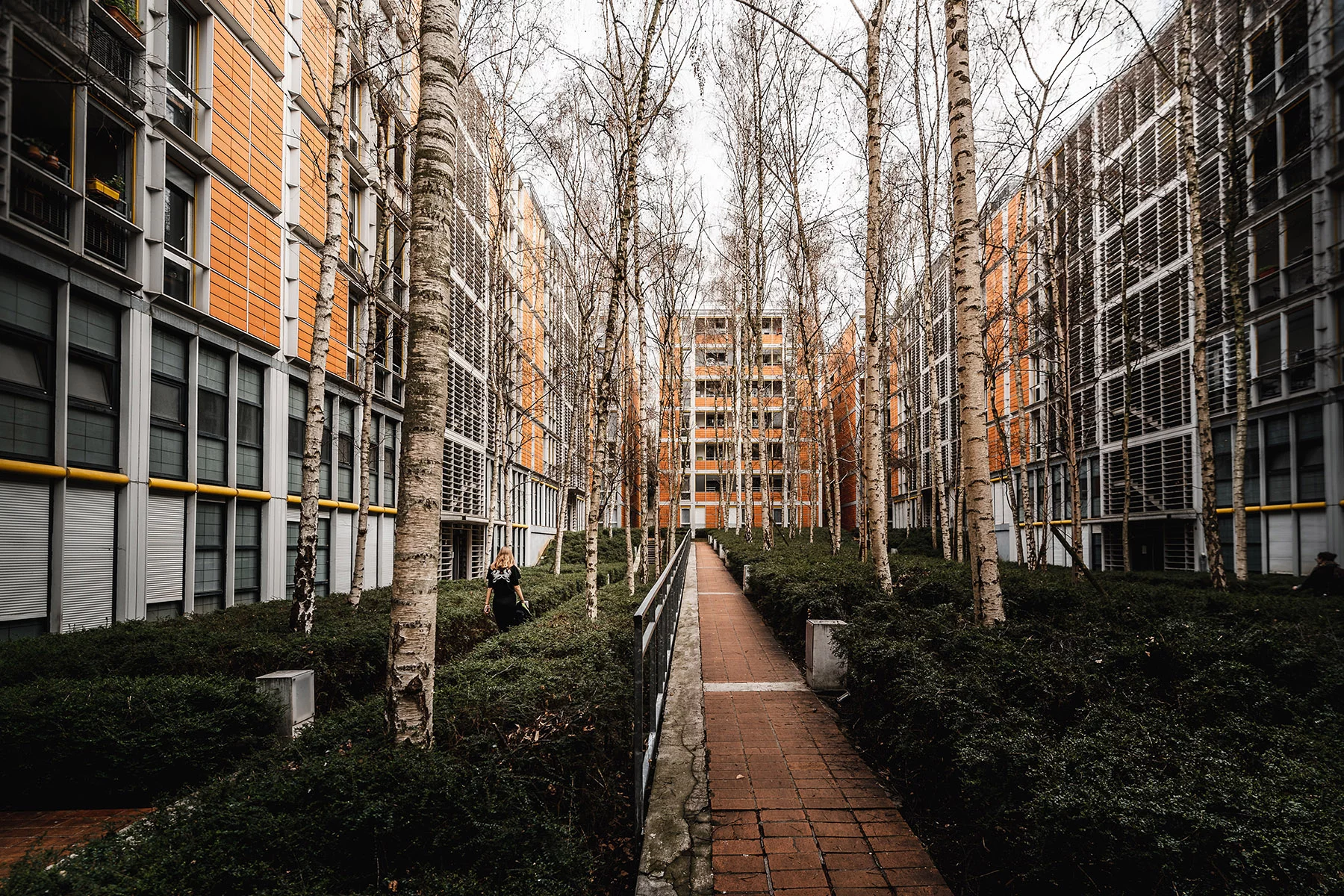
These include the monstrous high-rises around Place des Fêtes, and the northeastern zone from Stalingrad to Canal de l’Ourcq, which has experienced the same scourge of homelessness and drug abuse as mentioned above.
Tips on choosing a neighborhood in Paris
Perhaps all of this is a lot to take in, so here is a brief list of how you might go about choosing the right neighborhood for you in Paris:
- First of all, explore! Stay in a centrally-located, short-term rental or hotel, and walk around, exploring neighborhoods by day and by night to get a feel for them.
- Consider what your priorities are: to be close to your work? To live near an international school? To be able to get around by bike? To be near a park or an area with sports facilities? To have a place to park your car and easily get out of the city on weekends?
- Figure out what budget you have and what kind of housing you want, as this may limit the areas you can consider.
- Talk to colleagues, friends, or expat communities online to get more tips and advice.
- Reach out to a few rental agencies that work with expats to share your criteria and, get their expert advice.
Useful resources
- Service-Public – the government-run portal with detailed information about housing in France
- The municipal hall (mairie) of each arrondissement will have plenty of information on local infrastructure, services, schools, petitions, and events – Paris Centre (1st-4th arrondissements), 5th, 6th, 7th, 8th, 9th, 10th, 11th, 12th, 13th, 14th, 15th, 16th, 17th, 18th, 19th, 20th.
- Choose Paris Region – if you’re thinking of setting up a business venture in Paris, this website in English has the relevant information and resources
